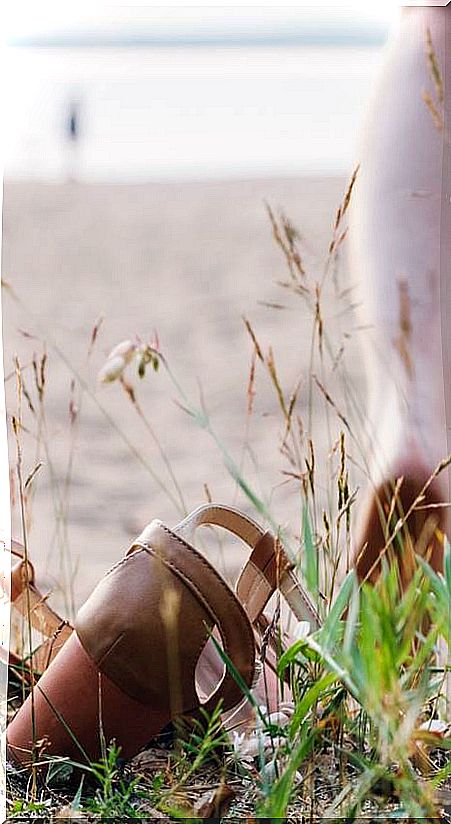Overcome Your Resistance To Change And Open Yourself To The Novelty
Change can be liberating, but in order to enjoy the possibilities it opens up, we have to face the loss that it entails.

Heraclitus expressed it in an unbeatable image hundreds of years ago: “No one bathes twice in the same river. ” And it is that water and time flow inexorably, and when someone returns to the river, its waters are no longer the same, nor is that someone who once was.
The world is constantly changing and so is each one of us. That is an unavoidable and undeniable fact: just look around you (or at yourself) to see it.
Types of changes
Some time ago it occurred to me that there are two ways in which change can occur in our lives or in our environment. I called the first “change in slope”, and the second, “change in step.”
1. The change in slope: progressive and imperceptible
It is made up of those small transformations that occur every day and that are imperceptible to us in our daily lives.
The wear and tear of things, the growth of children, aging are typical examples of changes in slope, but I think there are other subtle phenomena, such as the passage from falling in love to love, that also follow this pattern.
These changes are gradual and uninterrupted, so we only become aware of them when something – a photograph, a memory, a long absence – confronts us with the past.
2. The step change: abrupt and often by surprise
It is the one characterized by more obvious modifications and of which we are fully aware. Sometimes they happen in a programmed way and we can anticipate them, while at other times they surprise us, or even hit us.
A move, a new job, a birth or a death are events that represent a step change. In a couple relationship, such a transition could occur when getting married, but also as a result of other explicit agreements (“let’s not see other people”, “let’s spend more time with ourselves”).
The step change happens in a relatively short time, so it is easy for us to clearly recognize a before and after.
Whether sliding down a gentle slope or jumping from step to step, our life – and even more so if it is a healthy life – never stops; it is always on the move.
Resistance to change
These two types of changes lead to very different experiences in each person; likewise, the ways in which we deal with them may differ. However, they share the basic characteristics that distinguish a change process and generate some of the same difficulties.
As I already said and surely you have verified it yourself, the change is inescapable. However, on many occasions we find ourselves trying at all costs to avoid change. We do everything in our power so that things stay the same, so that nothing changes.
What is striking about the case is that these attitudes can arise even in the face of changes that the same person wanted or even actively sought.
We try to delay the change, postpone it or decrease it, erase it or undo it. When all this does not work, we tend to use another strategy: deny it … “nothing has happened here.” And there is still one last and far-fetched recourse: to upset things or situations so that nothing changes, this is to make the necessary modifications so that the balance always remains in the same place.
To change is to lose
Therefore, it is worth asking ourselves why change generates so much resistance to us. What is it that throws us back? The answer, I think, is simple: it is difficult for us to accept change because all change implies loss. When something is transformed, it ceases to be one way and begins to be another; what was, ceases to be … that is to say: it no longer exists.
Suppose, for example, you have a white pot that you like a lot and decide to paint it blue. The result is charming, just as you imagined it. Even so, you will probably feel the lack of the white pot ; you had gotten used to seeing her there; it was, in short (like everything that has accompanied you for some time), part of you.
By painting it, you have lost the white pot. Someone might say, “Well, actually the blue pot is the white pot.” To which, if we wanted to help him, we would have to reply: “No. The blue pot is the blue pot. The white pot no longer exists ”.
What comes may be better, but we will feel regret for what is gone.
And we could add: “I’m really sorry”, because, of course, losses hurt. We can understand, then, that our resistance to change is a resistance to confront the pain of losing what was before.
But then, you will say to me: “Are there no positive changes? Are there no changes that imply a gain?” Of course yes! But even those changes that are beneficial carry a situation of loss. It is possible that the gain is greater than the loss, but that does not mean that you will not feel sorry.
Pain is not measured in relation to cost / benefit ; rather it is the consequence that something that was part of me has disappeared; It affects me to have lost it even though I no longer want it, even though what has replaced it pleases me more.
You have to pass the duel
The same thing that happens to us with our belongings is true in relation to our occupations, our homes, our relationships and, of course,
ourselves. It is inevitable that any change is accompanied by the pain of leaving something behind. And I must add: leave it behind forever.
“Hey! -You’ll tell me-. But can’t the pot be repainted white? ” The truth is that, in most cases, no. In general, it is not possible to go back. Even if, for example, the vessel were repainted white, it would not be that first vessel, but another white vessel … because the tone of the white will not be exactly the same or the blue paint underneath will show through. That white pot will never come back.
For this reason, after each change, a period of mourning passes, a time for the elaboration of the loss, a period in which it is natural to feel pain.
- I have met many people who, shortly after deciding to end a relationship, find themselves thinking of going back (to whom has it not happened?). They say to themselves: “I feel so much pain … it must be that I still love him / her.” They confuse the pain of a loss with the desire to continue the relationship.
- Joaquín changed jobs to dedicate himself to what he had always wanted. However, something inside him rebels. You are not entirely comfortable. He misses his old colleagues, as well as the simplicity of the task he used to do. He wonders if he was wrong in his choice.
Pain or discomfort are not the measure of the success of our decision. As we said, what is coming may be better, but that is not why we will stop feeling sorry for what we abandoned or abandoned us.
The inevitable passage of time
All the examples I have given so far pertain to “step” changes. So you may be wondering: “What happens to ‘sloping’ changes? Are they also a loss? And in any case, what is it that is lost? To answer, let me tell you a little story or rather a little part of a great story.
In the book The Hobbit , by JRR Tolkien, Bilbo Baggins – one of those small, hairy-footed beings that is so admirable – is forced by the creature Gollum to solve a series of riddles if he does not want to become his adversary’s dinner. . The last riddle posed by the treacherous Gollum is as follows:
It devours all things: birds, beasts and trees. Chew the iron, bite the steel. Break stones and kill kings. Ruin cities and topple mountains. Who is it?
Poor Bilbo then begins to think of giants, dragons, and all the kinds of monsters he knows, but none of them have done all those things. He can’t find an answer and Gollum is already approaching him licking his lips. Bilbo wants to ask for more time to think, but he is so scared that the only thing that comes out of his mouth is: “Time! Weather!”. And it is fortunate, because that is, indeed, the answer.
Time, with its gentle, almost invisible slope, is a constant driver of change. Every moment we are losing something, which becomes the past and becomes irretrievable. Time, as in the riddle, touches everything – places, people, links – and even before leading to its disappearance, it
modifies it minute by minute.
These changes occur so slowly that we hardly even notice it (almost). But when we look at ourselves in a photograph from a few years ago, a certain nostalgia can be born in us. Beyond how happy we were then or how happy we are now, to see ourselves younger or more ridiculous, better or worse … Beyond these value judgments – which are so unimportant in reality – we will feel longing, because that individual that we see in the photograph no longer exists.
Today we are another. Every moment we lose the one we were.
Face change without strings attached
And that, which affects us – someone we loved is gone – can also be liberating. Nothing ties us to our past. We are someone new every day
and therefore we can choose, every day, what to do with our life.
This is the wonder of change, as it opens up a universe of possibilities for us. Only to face the changes that will come and accept those that have happened to us, we must be willing to lose a little. In return, we will win a huge range of options and possible paths.









